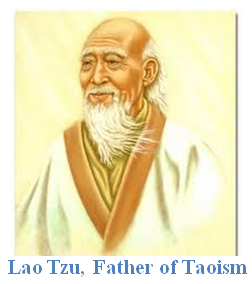Note: This is part I of a two part series. Click here for Part II.

“He who knows others is wise. He who knows himself is enlightened.”
Lao Tzu, Ancient Chinese Philosopher
Ever wonder why most people are dissatisfied with photos of themselves? The reason is more than false modesty. We know our appearance by the image we see in a mirror. However, the image seen by everyone else, including a camera, is our actual image, rather than our reversed, mirrored reflection.
Remember all those terrible MySpace self-portraits? The MySpace teens liked the photos, in part, because they showed the mirror image of themselves which matched the adolescents’ self-images.
Studies have confirmed this phenomenon. People prefer photographs of themselves in which the negative has been reversed and thus depicts the familiar view they see when they admire themselves in a mirror. Even though we are most comfortable with this inverted image, it is not how we are perceived by others.
Our self-perceptions are similar to our reflections in a mirror. We see a portion of who we are, but not our entire being. The lens by which we evaluate our strengths, weaknesses, and priorities is limited. The only way to obtain a complete understanding of ourselves and determine how we can improve our performance is to seek and act upon the observations and critiques of those we trust.
If you haven't already subscribed yet, subscribe now for free weekly Infochachkie articles!
No More Bottle Washing
I am on the Board of a growing, dynamic SaaS business which has recently graduated from the startup stage and entered the early-growth phase. In the course of expanding their business, the two Founders are in the midst of a classic shift from a bottle-washer mentality in which they must oversee every initiative, to one in which they only focus their efforts on tasks that have the biggest impact, while delegating urgent but less important duties. Fortunately, the Founders are comfortable delegating tasks to their highly talented Core Team. However, determining which tasks to retain and which are best suited for delegation is an ongoing challenge.
They were also interested in continually improving their capabilities and thus sought to augment their self-awareness by seeking honest and direct input from their subordinates. To this end, they asked me if I would conduct a 360-review of their performance, and provide them with an assessment of the company’s cultural health.
Agenda Truth
 My mantra throughout the process was, “The Truth Has No Agenda.” Rather than question the validity of the reviewers’ feedback, I considered every perception to be valid and worthy of consideration. I communicated to the reviewers and the Founders that we would spend no time trying to make someone “wrong” or dispute an observation. Our supposition was that because we respect and value our Core Team, we need to honor their perceptions and determine how we can act upon them, rather than attempting to invalidate them.
My mantra throughout the process was, “The Truth Has No Agenda.” Rather than question the validity of the reviewers’ feedback, I considered every perception to be valid and worthy of consideration. I communicated to the reviewers and the Founders that we would spend no time trying to make someone “wrong” or dispute an observation. Our supposition was that because we respect and value our Core Team, we need to honor their perceptions and determine how we can act upon them, rather than attempting to invalidate them.
Key Ingredients
The attributes that must be present in order to conduct an effective 360-review include:
Impartial Data Arbiter – The facilitator must have no preconceptions, other than providing information that will augment the reviewed party’s self-awareness and help the company seek the truth.
Safe – The subordinates must believe that their feedback will be appropriately camouflaged so as to not identify the source of specific comments.
Team – When Ravi Shankar performed at the 1971 Concert For Bangladesh at New York’s Madison Square Garden, the crowd cheered him profusely after his first “song.” He smiled politely and said, “Thank you. If you appreciated the tuning so much, I hope you will enjoy the playing more.” The American audience could not distinguish between the band tuning up and their playing of music – clearly the New Yorkers’ lack of experience with Indian music limited their ability to critically evaluate it. When performing 360-reviews, the reviewers must be senior enough to provide meaningful feedback, based on a solid frame of reference of “good” and “bad” management techniques.
No Founderitis – if the senior executives are not open to criticism, a 360-review will be a counterproductive and contentious exercise.
Constructive Criticism – the reviewers should not see the review as an opportunity to take cheap, anonymous shots at their bosses. One way to avoid this is to solicit examples, which illustrate critiques, and not allow reviewers to make unsubstantiated, negative statements.
The Process
I am far from an expert in 360-reviews. I had never facilitated one before, nor had I even participated in such a review. Rather than read a book or call a consultant, I used a common sense approach to devise an efficient and effective process by which I could obtain honest and constructive feedback. I was very fortunate to have the input of an experienced, operationally oriented, fellow Board member who had recently performed a 360-review for one of his portfolio companies and freely shared his invaluable insights.
Step 1: Questionnaire – Provide reviewers with written questions, and encourage them to be specific and to provide examples to support their assertions.
Ratings – Ask reviewers to augment their written responses with a numerical score, from 1 to 10, to provide a quantified ranking of each area under evaluation.
Culture – When executing a 360-review of a Founder or a CEO, include questions regarding the overall health of the company’s culture, the clarity of the company’s vision, and similar inquiries that might uncover systemic leadership shortcomings.
Step 2: Verbal Annotation – After reviewing the written responses, meet with each reviewer and clarify their responses. In many cases, employees will be more effusive in such verbal discussions, especially once you gain their trust.
Step 3: Summarize – Extract key themes from the written and verbal comments. I documented these highlights on PowerPoint slides, using as many direct quotes as possible and splitting the comments into “Positive” and “Negative” feedback for each question.
Step 4: Communicate – Discuss the feedback with the Executive(s) under review, determine action steps to resolve areas of improvement and determine the topics to convey to the Core Team. I shared my findings with both Founders together so they could benefit from each other’s review. Clearly, this should be done judiciously, as pointed, negative feedback might be best communicated one-on-one.
Core Team – Review the key findings with the senior team and make them part of the solution, especially with respect to helping the Founders delegate non-critical duties.
Company – Work with the reviewed Executives and the Core Team to determine what themes to convey company-wide, preferably in a Company Meeting.
![]()
“Know thyself.”
Socrates, Ancient Greek Philosopher
The first step to knowing yourself is understanding more than just the image you see in mirror. You must also understand the image seen by others, even when it causes emotionally painful and confusing cognitive dissonance. Thus, confident entrepreneurs understand the value of seeing themselves through the lens of seasoned executives whose opinions they value and trust.
When the source of such criticism is trustworthy and the intent is to offer constructive feedback, entrepreneurs can utilize the feedback to obtain a complete and accurate view of themselves, ushering them onto Lao Tzu’s path of enlightenment.



